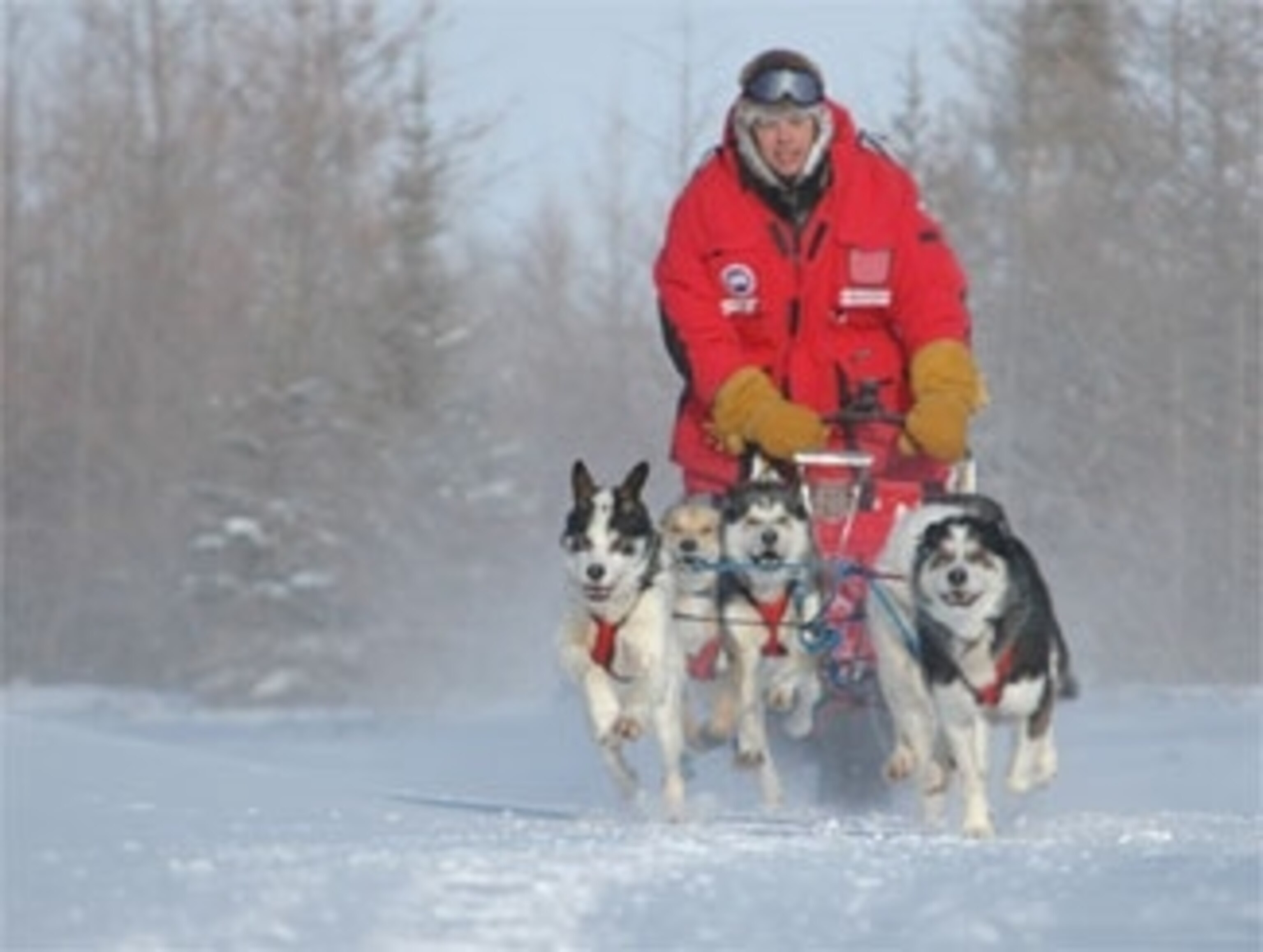
What a Mush!
Associate Editor Amy Alipio teaches us all how to mush…
When I was in Churchill, Manitoba, last October, I went on a dogsledding excursion run by Dave Daley of Wapusk Adventures, which gave us a tiny but thrilling taste of what it’s like to be pulled by a pack of dogs who love to run. As soon as we entered Daley’s yard, the dogs—sensing that they were going to be running soon—started leaping straight up into the air like they had rocket blasters under their paws.
How is the Hudson Bay Quest different from other dog-sled races, like the famous Iditarod?
Well one thing is that we let the Inuit racers race with their traditional sleds and fan hitches. In a fan hitch, the dogs are each attached to the sled by their own line, in a fan formation. The more typical hitch system, used in the Iditarod and Yukon Quest races, is the gangline, where dogs are attached to one single line, usually in pairs.
What inspired you to found the race?
Living in a remote community, we do watch the famous dog-sled races, and we wanted to have our own Iditarod or Yukon Quest. I’m a Métis, and I saw it as a chance to get together the aboriginals of the north and revitalize traditional northern dog sledding. It’s not as long a race as the Iditarod but it’s pretty grueling. Every year so far we’ve had a blizzard at some point during the race. When I started, there were four teams out of Nunavut; this year there are 12. A lot of guys that hadn’t raced in awhile are getting back into it, and young people, a new generation of dogsledders, have sprung up. This is our opportunity to showcase our northern racers, although we do invite teams from the south. We have a lot of repeat racers too. Every year the race has become more and more popular.
Any tips for how a visitor can experience the race?
Tour operators like Frontiers North bring people up for the Quest. Tourists mainly hang out at the start line, in Churchill, because Aurora Winterfest is also going on at the same time in town. If you’re at the finish line in Arviat, which is a real traditional Inuit community, you’ll see the traditional racers coming in with their fan hitches, dressed in caribou skin clothing. There are two banquets at the end: a mushers’ banquet and an annual traditional community feast.
Visitors are very welcome to attend them.
In addition to organizing the race, you also compete in it yourself.
Yeah, I’m kind of the black cloud racer. I don’t know if it’s because I’m exhausted already by the time the race gets started, but the first year I made it halfway. The second year I tore a hamstring. The third year I came in fourth. And last year I went on the wrong trail. So my goal this year is to improve my fourth-place standing. But it’s just an accomplishment to finish the race. My motivation also is just to run with all the friends I’ve made and have a good time.
And your dogs are looking forward to the race?
- National Geographic Expeditions
I know the dogs can win, it’s just the driver who has a hard time.
They are very competitive dogs. They want to win.
Photos: Dave Daley and his dogs in the race; courtesy Dave Daley
